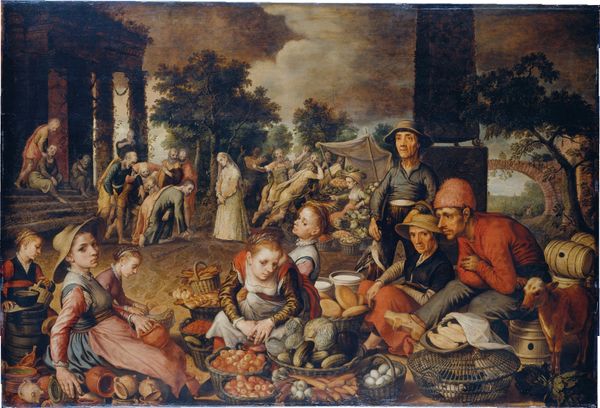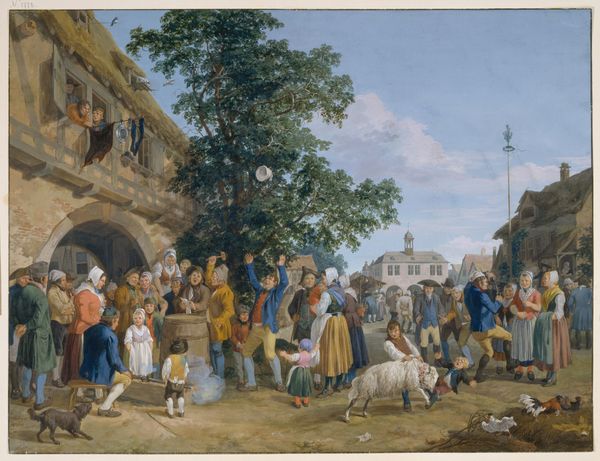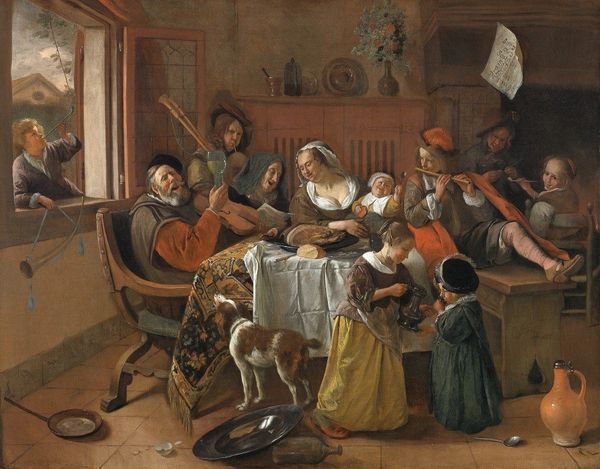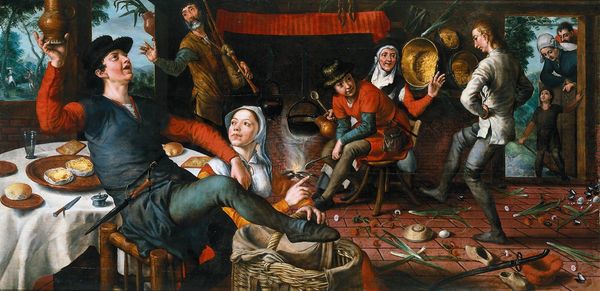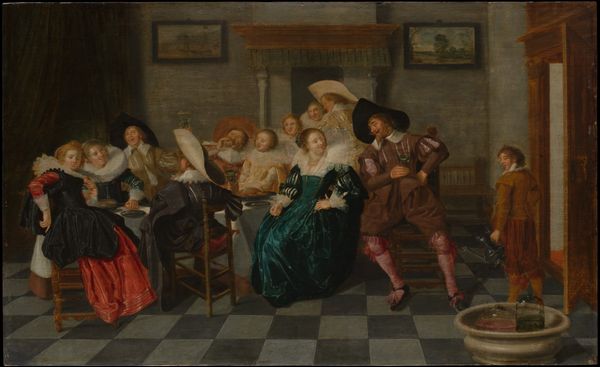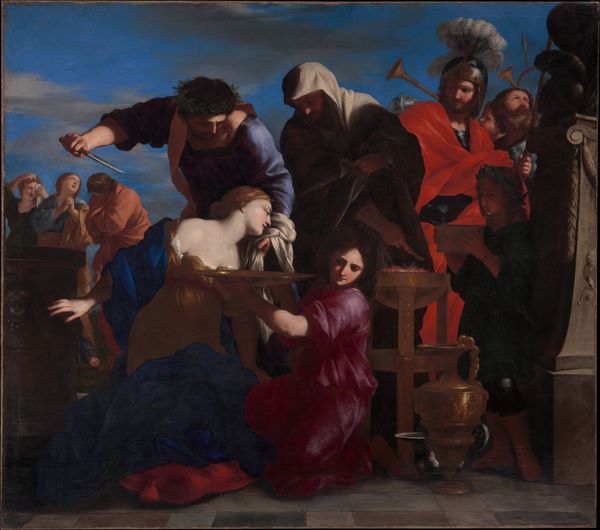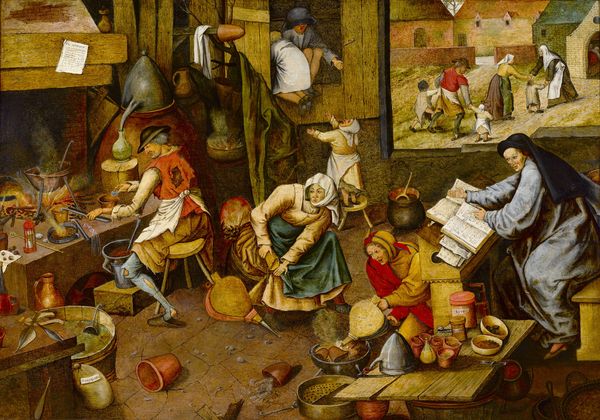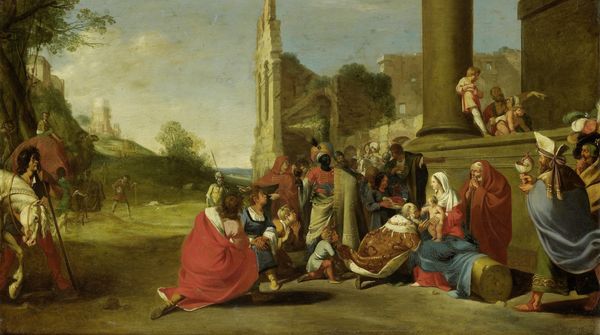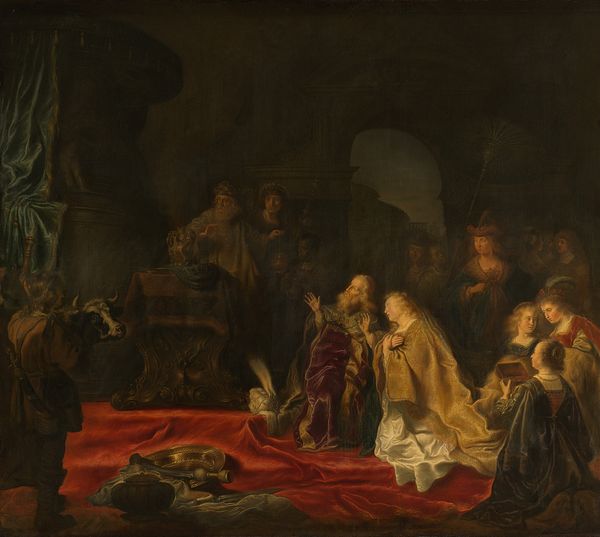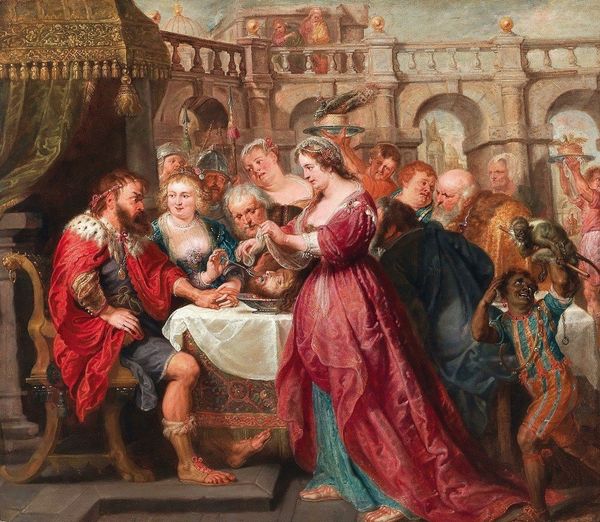
panel, oil-paint
#
panel
#
baroque
#
oil-paint
#
landscape
#
painted
#
figuration
#
oil painting
#
flemish
#
mythology
#
genre-painting
#
history-painting
#
realism
Copyright: Public domain
Curator: This oil-on-panel artwork is titled "Der Winter," created by Jan Brueghel the Elder. Editor: My initial reaction is that it’s bustling! There’s so much activity; my eyes don't know where to land first. A privileged domestic scene seems to unfold, and the painting feels celebratory in tone despite the bare trees. Curator: It presents a fascinating look at class and societal structures. Notice the clear delineation between those laboring and those being served. The outdoor market scene beyond contrasts with the opulence within. How do you see it reflecting broader societal narratives? Editor: I'm struck by the active involvement of women of color depicted in servant roles. In foreground and in background, people of color seem to fulfill the wishes of their masters: I’m very conscious of power dynamics as I consider issues like representation and how this art perpetuates such tropes. I wonder how audiences then and now engage with this display. Curator: It is interesting to observe the inclusion of these people. While it is difficult for modern viewers to separate a critique of social history of class and race, it’s difficult to say what messages an average viewer might perceive at the time. Editor: This makes me question what choices led this artist to include figures such as those featured here in subservient roles? Do these images challenge viewers to contemplate the ethics of imperialism? It feels deeply conflicting and makes me ask questions. Curator: Perhaps it's crucial to recognize the artwork as a mirror reflecting societal realities. It showcases hierarchies prevalent during Brueghel's time, inviting reflections on these socio-political systems and how their visual portrayals functioned. Editor: Yes. It acts as a stark reminder of ingrained structural inequality, as well as its pervasiveness throughout our visual cultural heritage. Curator: Thinking about its display today forces us to engage critically with art’s role within discussions regarding race and socio-economic standing. Editor: Ultimately, for me, it sparks crucial dialogue—interrogating not only artistic interpretation but societal consciousness and how we navigate visual texts that grapple with themes such as class, gender and identity within cultural frameworks of yesteryear and today.
Comments
No comments
Be the first to comment and join the conversation on the ultimate creative platform.
